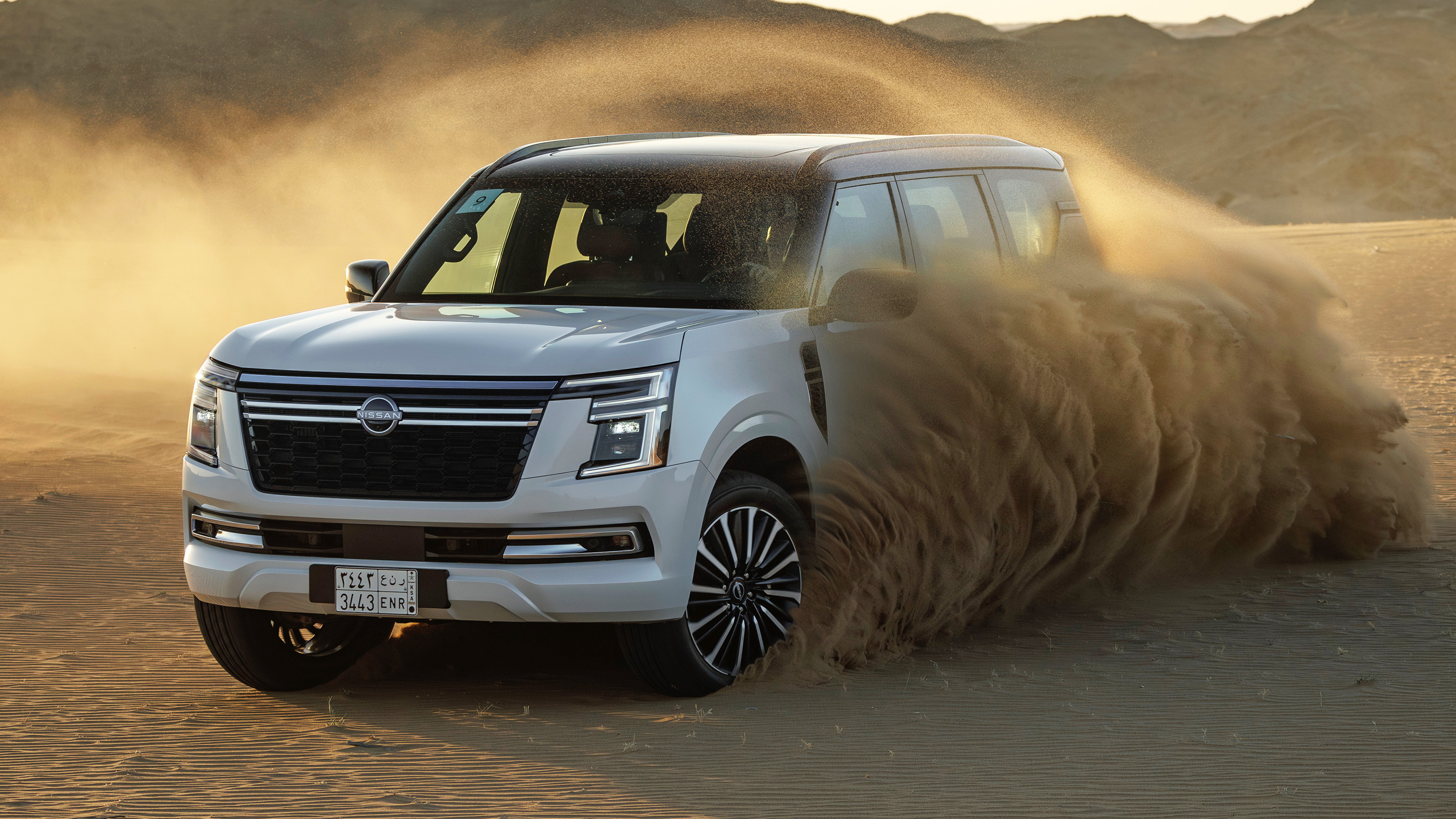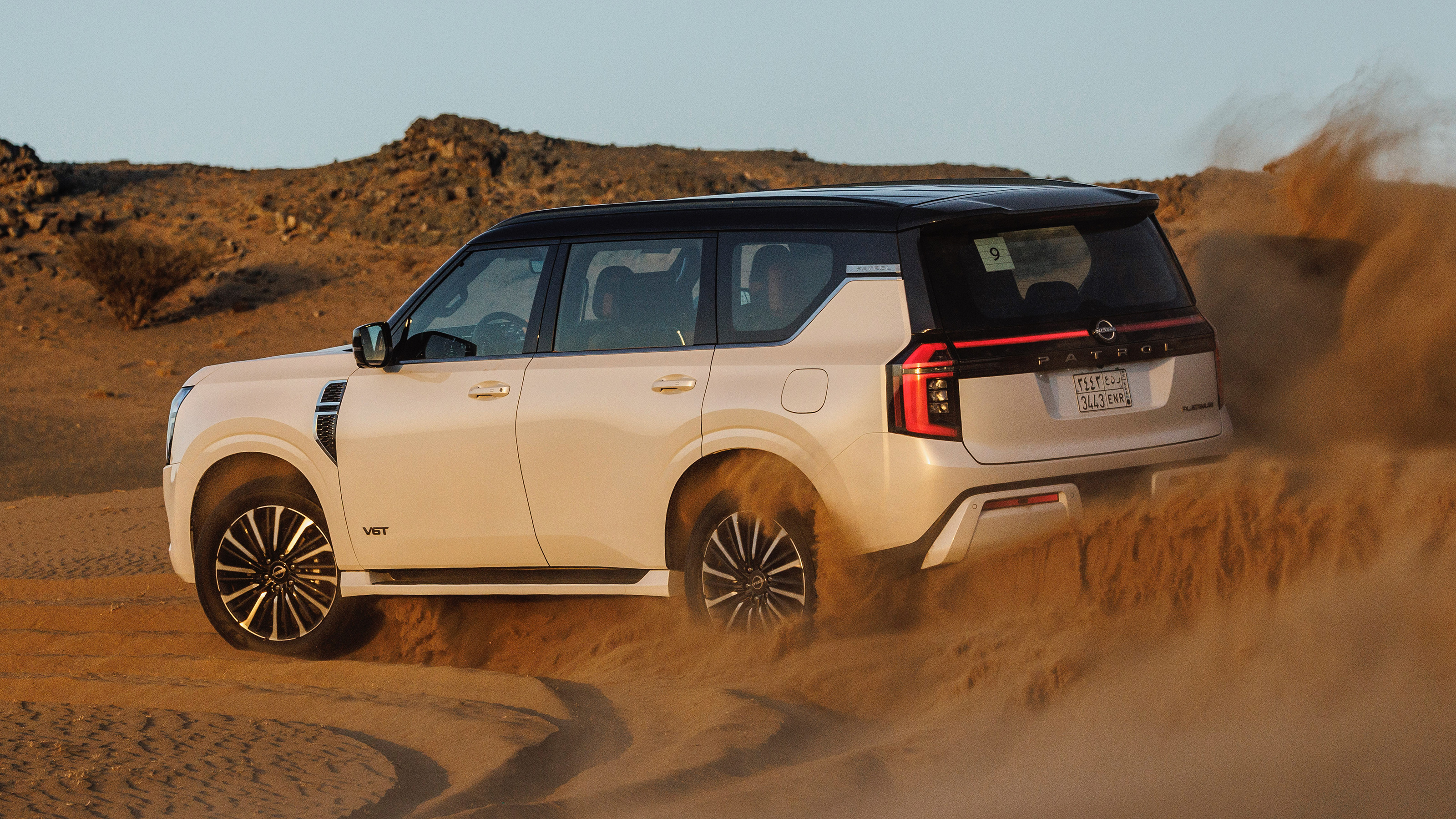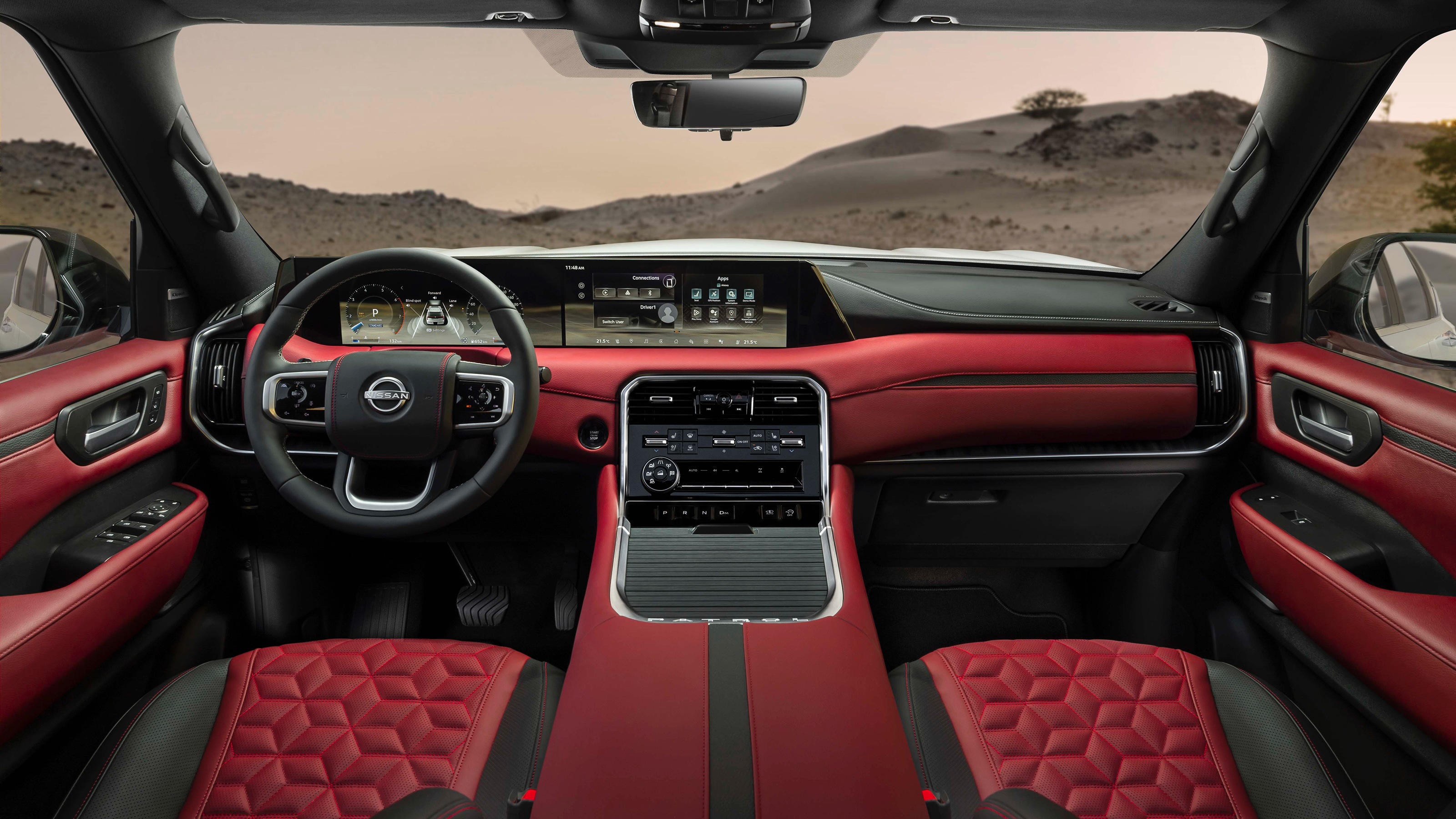
Nissan Patrol review
Driving
What is it like to drive?
Flawed. Not badly, just in the same way we’re used to with all cars that have a ladder frame chassis with the body on top. To be fair there’s not much of the lateral shimmy that affects the Land Cruiser 250, but that’s mostly because the Patrol uses more sophisticated independent suspension. Air springs help deliver a much calmer and more settled ride than its predecessor and body control is actually very good for a car of this weight.
And there’s more: the steering is more accurate and better weighted than you might expect from a car that’s been engineered for the sandy back of beyond and once leaning in a corner, it settles and holds a consistent line nicely. The brakes are pretty sharp too.
What’s flawed then?
The suspension can’t quite control the heavy wheels when they get kicked by potholes and speedbumps, and there’s generally more commotion and buffeting than you’d expect from a car with luxury pretensions. But people still considered the old one a luxury car and this one is way more together – torsional rigidity is up 40 per cent, lateral rigidity by 57 per cent.
But here’s the Patrol’s dilemma. It wants to be both luxurious, yet devastatingly capable off-road. So some compromises have been made (beam axles have gone), while others haven’t (the ladder frame remains).
How’s the engine?
Better than the gearbox. The nine-speed auto is fine if little is asked of it, but if you choose to pull paddles (they’re fitted to all versions, as they’re very handy in the sand so you stay locked in a single gear) the shifts take too long and in D-for-Drive the ‘box has a tendency to surge the low gears at high revs. No-one will care a jot about any of this provided it tolerates huge abuse.
The V6 has certain commonalities with the engine in the 400Z including the bore diameter, but a longer stroke to generate more torque. That stands at 516lb ft at 3,600rpm – meaning the Patrol doesn’t have a stump-pulling bottom end. Again, there’s a reason. In the dunes you need to keep revs up to maintain engine response and momentum.
At low revs there’s also a fair amount of delay before the turbos start swinging. Again, you never notice off-road because you’ve always got at least 3,000rpm on the dial.
Even if you’re in low range?
We’re talking about dune driving here, so yes. And another neat feature. Most low range systems cut out once you reach a particular gear or speed. That’s fine if you have rock, rather than sand, as your primary obstacle, but driving through a vast expanse of desert speeds can get quite high, so the Patrol’s low range works across every gear at all speeds.
Is it good in the dunes?
It would be a lot better if it didn’t weigh upwards of 2,700kg. Sand drags hard on weight and even with 275-width tyres dropped to 25psi, once you break the wind-blown sand’s surface tension the Patrol has to work very hard to keep itself going forwards rather than down. A 1,000kg Suzuki Jimny can skim over sand like a Beetle, this has to batter its way through, max power and torque churning sand everywhere.
Sounds like fun.
Don’t get us wrong, there’s not much that’s more entertaining in the driving world than charging anywhere you please across a desert that spreads to the horizon. And not much that’s more stressful and exhausting than having to dig a Nissan Patrol out when it (ahem, inevitably) gets beached. It’s also fabulously heavy on fuel in the dunes – we averaged about 3mpg because you’re often using a lot of fuel to go very little distance, with the wheels almost permanently spinning.
As part of the Patrol’s development, Nissan engineers covered over 100,000km in the dunes and you can tell. Twist the mode dial to Sand and it’ll raise the body to maximum height, ask you to select low range (but leave you the choice of locking the rear diff) and unshackle the traction and stability control so the car can move around.
Not once did we feel the Patrol didn’t know what it was doing. No matter how much of a novice dune driver you are, the Patrol is there to hold your hand. Reading the dunes, working out where the sand will be softer, or harder? That’s down to you though.
Let’s just rewind a second… 3mpg?!
Down to the use case. On road it was averaging closer to 25mpg, against a claim of 27.4mpg. Which doesn’t sound too bad, does it? Sort of makes you wonder if it would find an audience in Europe.
There’s one very good reason Nissan will never bring it here though: the fleet average CO2 penalties that impose hefty fines. Exactly the same reason we see hot hatches coming in such small batches.
It would find a limited audience here because when all’s said and done the Patrol is a very specific car, and doesn’t actually have that much bandwidth. This is not a car that European buyers would be convinced ought to sit alongside a Range Rover or Mercedes G-Class.
Variants We Have Tested

Trending this week
- Car Review
Ferrari Amalfi
- Long Term Review
Is the Suzuki Swift still the best small car money can buy?







